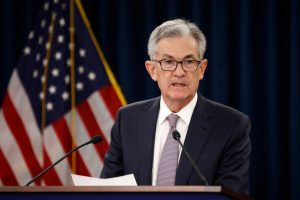The U.S. Federal Reserve has on Wednesday increased its interest rates for the seventh time in a row this year, warning that more surges will be necessary to rein the rapid pace of price increases.
The U.S. central bank agreed to lift its key interest rate by 0.5 percentage points, pushing the target range for the Fed’s benchmark rate to 4.25 percent – 4.5 percent – the highest rate in 15 years. However, it was a smaller increase than in recent announcements.
Federal Reserve Chairman Jerome Powell said the Fed wanted to slow down to give time to see how the U.S. economy is responding to the cumulative impact of the hikes. However, Powell added that Wednesday’s rise was “still a historically large increase and we still have some way to go.”
The Fed is responding to inflation that remains near a 40-year high, though it has fallen since hitting a peak of 9.1 percent in June, helped by a drop in energy costs.
The latest U.S. figures showed consumer prices climbed 7.1 percent over the 12 months ending in November, from 7.7 percent in October.
Powell said the Fed was encouraged by signs that inflation saw some improvements, but that it would take “substantially more evidence” to be confident that it was on a sustained downward path.

By raising borrowing costs, the U.S. central bank is hoping to cool economic activity and relieve the pressures pushing up prices.
Yet, the policymakers run the risk of setting off a deep economic downturn in the world’s largest economy.
Projections released after the meeting, with the Fed cutting its 2023 economic growth forecast to 0.5 percent, down from the 1.2 percent it forecast in September projections.
Powell said the U.S. economy could still avoid a recession and that a soft landing was still achievable, especially if inflation continued to drop.
“I don’t think it would qualify as a recession because you have positive growth. It’s slow growth, it’s below trend, it’s not going to feel like a boom,” Powell stated, “I don’t think anyone knows whether we are going to have a recession or not.”
While they expect inflation to go down, most Fed members see it remaining above 3 percent in 2025, which is higher than the Fed’s 2 percent target.
“We welcome the recent inflation reports, but we are realistic about the broader project [of reducing inflation]. We need to be honest with ourselves that core inflation is still 6 percent. Right now, the focus has to be on getting inflation down.,” Powell noted.
“It will take substantially more evidence to give confidence that inflation is on a sustained downward path.”
“My view and my colleagues … that we will have to hold policy for a sustained period.”
The Fed has also forecast a higher unemployment rate. It expects that to increase to 4.6 percent next year, compared with its September forecast of 4.4 percent.
“The Federal Open Market Committee participants expect supply and demand conditions in the labor market to come into better balance over time, easing upward pressures on wages and prices,” he added.
The Fed has gone through increased pressure to consider the cost of its policies; however, Powell said the Fed was focused on inflation, which he said would have far more damaging economic effect in the long run.
“I wish there were a completely painless way to restore price stability,” Powell said. “There isn’t. This is the best we can do.”



